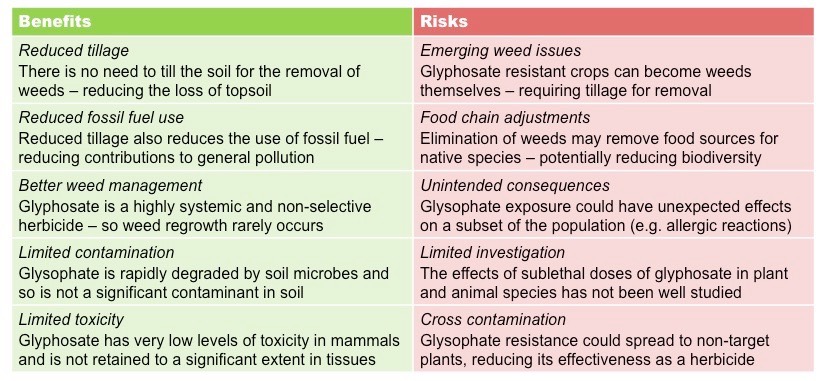![]()
Skill:
• Evaluation of data on the environmental impact of glyphosate-tolerant soybeans
Glyphosate-resistant soybeans can tolerate exposure to glyphosate – which is used in agriculture to eliminate weeds (herbicide)
- Consequently, these transgenic crops have been widely adopted in a number of countries around the world
There are several potential environmental benefits and risks associated with the use of glyphosate-tolerant soybeans
- These include the impact of tillage, effects on biodiversity and the potential for unintended transfer of glyphosate resistance
Impact of Tillage
- Spraying crops with glyphosate reduces the need for tillage, which removes topsoil and increases soil erosion
- Reducing the amount of tillage will also reduce the associated use of fossil fuels, limiting the impact of pollution
Effects on Biodiversity
- Glyphosate has very low levels of toxicity in animal species and so is unlikely to impact population numbers in an ecosystem
- It is also rapidly degraded by soil microbes and so is unlikely to accumulate to dangerous levels within the environment
- However, the effect of sublethal exposure glysophate has not been well studied in most plant and animal models
- The removal of native weed species by glysophate treatment could also adversely effect food chains – reducing biodiversity
Cross Contamination
- Glyphosate tolerance can potentially be transferred to native species – producing weeds that are resistant to the herbicide
- This impact can be reduced by targeting the resistance gene to chlorophyll – preventing its spread in pollen granules
- Several species of glyphosate-resistant weeds have already been identified in the wild
Potential Environmental Consequences of the Use of Glyphosate-Tolerant Soybeans

